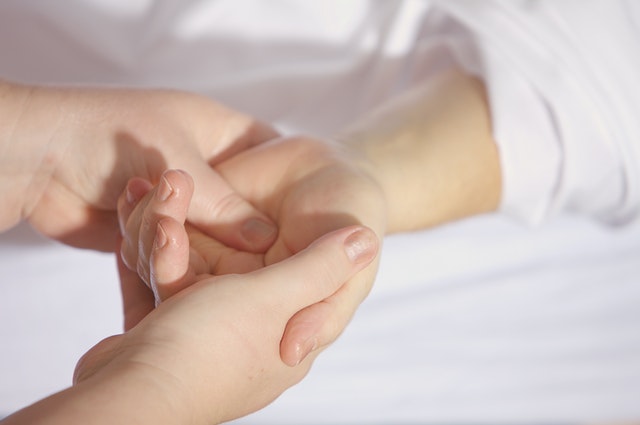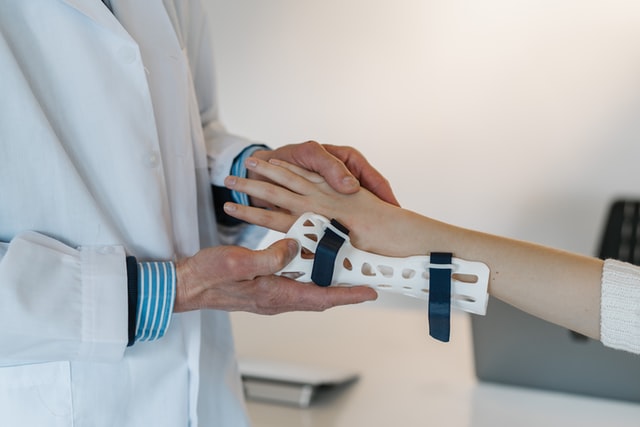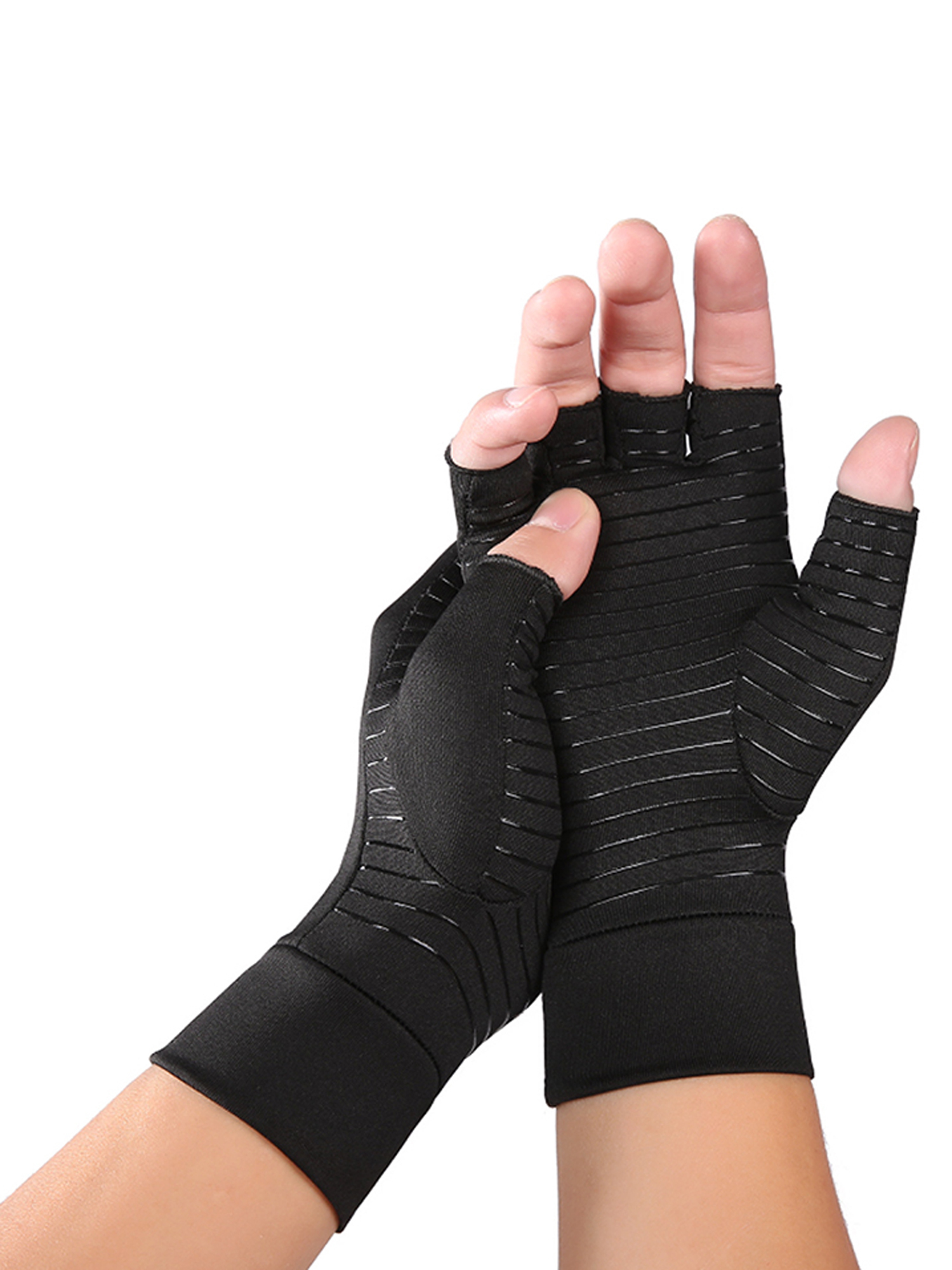
Carpal tunnel syndrome is a common disorder that can cause pain, numbness, and tingling in the hand and arm. While there is no cure for carpal tunnel syndrome, there are several home remedies that can help relieve the symptoms. Here are five of the most proven home remedies to help release yourself from carpal tunnel syndrome.
Test for carpal tunnel
A doctor may also order nerve conduction tests, such as electromyography (EMG), to help in the diagnosis of carpal tunnel syndrome. If a person has carpal tunnel syndrome, these tests will show that the median nerve is impaired.
Phalen’s test
The patient holds both arms outstretched with palms facing down and fingers fully extended for one minute. A positive test result occurs if pain is perceived in the medial nerve distribution of the hand, radiating to the thumb and first three fingers. If there is no carpal tunnel syndrome present, this maneuver does not reproduce symptoms of carpal tunnel syndrome .
Tinel’s test
With his or her wrist flexed 90 degrees, a positive Tinel sign results when tapping over the median nerve as it passes under the transverse carpal ligament and reproduces symptoms of carpal tunnel syndrome on the ipsilateral side.
Reverse Phalen’s maneuver
With his or her wrist flexed 90 degrees, a positive test result occurs when pain is reproduced by the patient leaning the head against the edge of a table with hands hanging freely down for one minute.
Allen’s test
With the elbow at right angles, active supination and pronation of both forearms (while holding each other) causes numbness in the distribution of radial nerve.
Checkerboard test
The patient holds both arms outstretched with palms facing down and fingers fully extended for 30 seconds while looking at a black-and-white checkerboard on a wall 20 feet away. If it becomes impossible to distinguish some squares from others because they look “fuzzy”, positive carpal tunnel syndrome is suspected.

Carpal Tunnel home remedies
Carpal Tunnel Syndrome (CTS) is a condition that results from compression of the median nerve in the wrist. Symptoms can include pain, numbness and tingling in the fingers, hand weakness and difficulty gripping objects. While there is no cure for carpal tunnel syndrome, there are a number of home remedies that can help relieve symptoms.
Some of the most effective home remedies for carpal tunnel syndrome include:
Simple Rest
One of the best ways to relieve carpal tunnel symptoms is to rest your hands and wrists. Avoid activities that cause pain or discomfort and give your hands time to heal.
Ice
Applying ice to your wrists can help reduce inflammation and pain. Wrap an ice pack in a towel, or put ice cubes in a plastic bag. Apply the pack to your carpal tunnel for 10 to 15 minutes every few hours.
Heat
Using heat can help increase blood flow and relieve carpal tunnel symptoms. Use a heating pad set to low-heat or place warm compresses on your wrists several times each day to soothe carpal tunnel pain. Be sure your skin doesn’t get too hot; you could cause burns if it does.
Massage
Applying gentle pressure with massage can stimulate blood flow, which can improve carpal tunnel symptoms. Rub your carpel tunnel by placing one hand over the other and moving them in opposite directions along the carpel tunnel for two minutes.
Vitamin B6
Taking vitamin B6 supplements may help relieve carpal tunnel symptoms. Talk to your doctor before starting any new supplement, however. Too much vitamin B6 can be harmful.
Splinting
Wearing a splint at night can help keep your wrists in a neutral position and reduce carpal tunnel pain. There are many different types of splints available, so talk to your doctor about which would be best for you.
Surgery
If home remedies don’t help relieve carpal tunnel symptoms, your doctor may recommend surgery to release the pressure on the median nerve. This is a last resort, however, and most people can find relief from carpal tunnel symptoms with other treatments.
Carpal tunnel home remedies can help reduce carpal tunnel syndrome symptoms, though surgery may be necessary for advanced carpel tunnel cases. Talk to a doctor about a carpel tunnel treatment option that’s right for you.
Carpal tunnel syndrome exercises
These are some of the common hand and wrist exercises you can do to relieve some of the discomfort:
Wrist stretch
The first type of exercise is called the wrist stretch. This exercise is done by extending your arm in front of you with your palm facing down. Then, slowly bend your wrist down so that your fingers are pointing towards the floor. Hold this position for about 10 seconds, and then release. Repeat 3-5 times.
Flexion Stretch
The second type of exercise is called the flexion stretch. This exercise is done by extending your arm in front of you with your palm facing down. Then, slowly bend your wrist up so your fingers are pointing towards the ceiling. Hold this position for about 10 seconds, and then release. Repeat 3-5 times.
Extension stretch
The third type of exercise is called the extension stretch. This exercise is done by extending your arm in front of you with your palm facing up. Then, slowly bend your wrist down so that your fingers are pointing towards the floor. Hold this position for about 10 seconds, and then release. Repeat 3-5 times.
Thumb opposition
The fourth type of exercise is called the thumb opposition stretch. This stretch helps to strengthen the muscles that control the thumb movement as well as those around it . To begin, curl both hands into fists except for both thumbs which should be sticking out from each fist. Bend your right thumb down so it touches the side of your index finger and your left thumb up so it meets the side of your little finger. Hold for five seconds then release. Do two sets of 10 repetitions each per day.
Pinch grip
The fifth type of exercise is called the pinch grip. This exercise helps to improve strength in the muscles around the carpal tunnel. To begin, hold a lightweight in your hand with your fingers curled around it. Then, slowly extend your fingers until they are straight. Hold for 5 seconds, and then release. Repeat 10 times. You can increase your weight as you get stronger.
Massages for carpal tunnel with video tutorials
Massage helps to improve blood circulation and reduces inflammation. It also helps to relax tight muscles and relieve tension in the carpal tunnel.
If you are suffering from carpal tunnel syndrome, Massage for carpal tunnel may be a good option for you. Talk to your doctor or therapist about which massage technique would be best for you. Massage can be a great way to improve symptoms and keep carpal tunnel syndrome under control.
There are a number of different massage techniques that can be used for carpal tunnel syndrome. Some of the most popular techniques include Swedish massage, deep tissue massage, and trigger point massage.
Swedish massage
Swedish massage is the most gentle of the three techniques. It involves long, smooth strokes that help to improve blood circulation and flexibility.
Deep tissue massage
Deep tissue massage is a bit more aggressive than Swedish massage. It uses slower, deeper strokes to target the deep layers of muscle and connective tissue. This technique can help to break up scar tissue and relieve tension.
Trigger point massage
Trigger point massage is the most aggressive of the three techniques. It involves applying pressure to specific trigger points in the carpal tunnel. This can help to relieve pain and tension.
Carpal Tunnel Release Procedure
This segment is written for healthcare professionals
The Carpal Tunnel Release Procedure is a surgery done to cut the transverse carpal ligament forward under the medial epicondyle of the wrist. This ligament is responsible for making the median nerve smaller so that it will fit in the carpal tunnel, which is an area on Palm side of the wrist.
There are a few steps involved, but first one must make an incision between Lister’s tubercle and pisiform bone. These are two bones at the end of your wrist. If tendons or nerves are hurt during this process be careful not to damage them.
After making the incision, visualize your median artery and vein underneath these structures before dissecting them away from that area where they are attached to surrounding tissues.
Then you will find the transverse carpal ligament, cut it as close as possible near the medial epicondyle so nearby nerves won’t be affected after surgery.
Once done, irrigate the wound well then close it up carefully because it is vital for the patient’s health to do so, also apply a compression dressing after surgery.
Carpal tunnel gloves – do they work?
Carpal tunnel gloves have been shown to be effective in preventing injury in some people with carpal tunnel syndrome. They work by keeping the carpal tunnel open and reducing pressure on the median nerve.
If you are experiencing symptoms of carpal tunnel syndrome, carpal tunnel gloves may help to reduce your discomfort.
Carpal tunnel gloves are normally made out of neoprene but may be made out of other materials such as spandex.

Carpal tunnel gloves usually include padded sections over where carpal tunnel are most likely to form along with wide wrist straps that support your hands.
Neoprene is designed to provide compression for areas that it covers and carpal tunnel gloves do the same thing.
The wrist straps on carpal tunnel gloves also provide support for your wrists so that they aren’t forced to bend unnaturally
Conclusion
Carpal tunnel syndrome is a common ailment affecting remote workers due to the long hours spent typing i.e. the constant friction and stresses on the tendons of the wrist. With proper treatment, long term wrist damage and pain can be prevented.
Contact our resident Physiatrist – Dr. Jay Bender in The VIOS Clinic for more information about carpal tunnel syndrome or other ailments that may affect your work abilities.
You can make a direct access booking by clicking on this link.

BLOG AUTHOR
Dr. Ismail Sayeed
Dr. Sayeed is the Medical Director of ViOS, Inc. He is a deeply committed physician entrepreneur & medical blog writer. While building the global infrastructure of the VIOS Clinic, he is dedicated to educate people on the potential of specialist telemedicine for managing chronic diseases.
Read more about him in his author bio

0 Comments